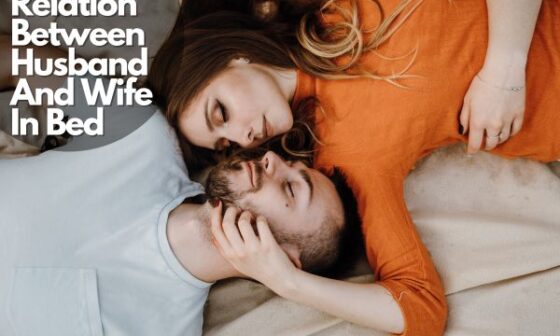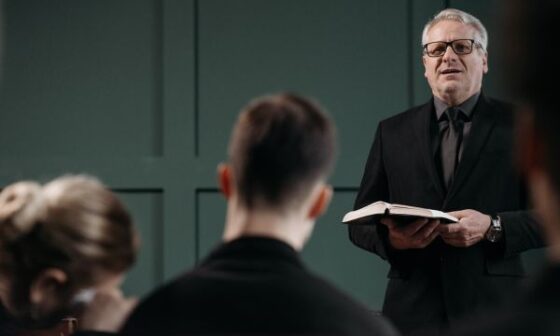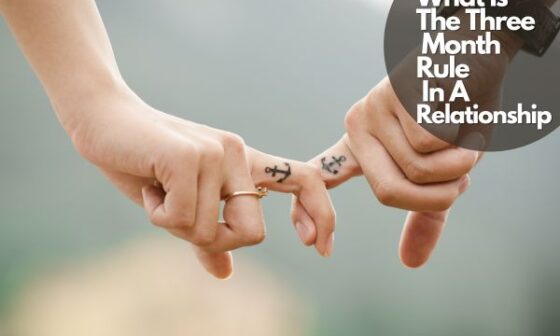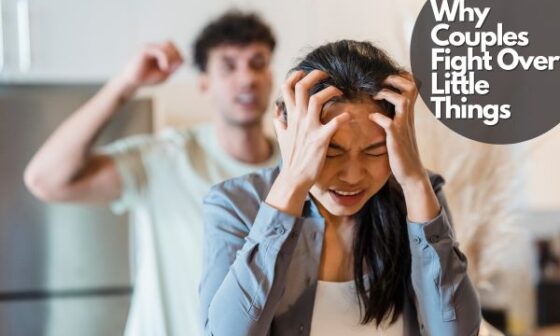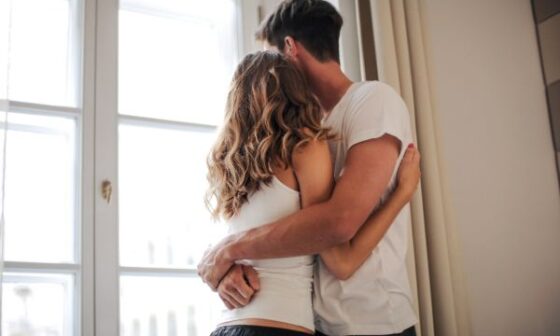Have you ever noticed how some couples appear to share striking similarities in their physical appearance? It’s not just a coincidence. This phenomenon has intrigued scientists and psychologists for years, prompting the question: Why do couples look alike? While there is no one-size-fits-all answer, this article explores various factors that contribute to this intriguing phenomenon.
Why Couples Look Alike
Couples looking alike can be attributed to a combination of genetic similarity and environmental factors. Let’s delve deeper into these factors and gain a better understanding of their role in shaping the physical resemblance between partners.
1. Genetic Similarity
One of the primary reasons couples may look alike is genetic similarity. Humans are naturally drawn to individuals who share certain genetic traits. This preference stems from an instinctive drive to seek out mates with compatible genes, which can increase the likelihood of healthy offspring. When couples have similar genetic backgrounds, physical similarities may manifest, such as facial features, body structure, and even hair color.
2. Environmental Factors
Beyond genetics, environmental factors also play a significant role in couples looking alike. Shared experiences, lifestyles, and daily routines can influence physical appearance. Couples who spend considerable time together often adopt similar habits, such as exercise routines, dietary choices, and even grooming practices. Over time, these shared behaviors can contribute to a physical resemblance.
3. Evolutionary Psychology Perspective
From an evolutionary psychology perspective, several theories help explain why couples tend to look alike. These theories shed light on the underlying psychological mechanisms that drive this phenomenon.
4. Assortative Mating
Assortative mating suggests that individuals tend to select partners who are similar to themselves in various aspects. This can include physical traits, such as facial symmetry or body proportions. When couples engage in assortative mating, they increase the likelihood of producing offspring with desirable characteristics.
5. Sexual Selection
Sexual selection also plays a role in couples looking alike. Humans are subconsciously attracted to individuals who exhibit signs of fertility, health, and reproductive success. When couples share similar physical traits associated with these qualities, it enhances their attractiveness to one another.
6. Familiarity and Comfort
Humans are naturally drawn to familiarity and seek comfort in the presence of those who resemble themselves. Couples who look alike may experience a sense of familiarity and comfort, which strengthens their emotional bond. This bond can contribute to a physical resemblance, as facial expressions and body language become synchronized over time.
7. Shared Experiences and Lifestyle
Couples who share experiences and a similar lifestyle often develop physical similarities. Spending significant amounts of time together can result in shared hobbies, interests, and even facial expressions. Over time, these shared experiences shape physical appearance, leading to a resemblance between partners.
8. Non-Genetic Influences
While genetics and shared experiences play significant roles, non-genetic influences also contribute to couples looking alike. Let’s explore some of these influences in detail.
9. Socialization and Mimicry
Human behavior is strongly influenced by socialization and mimicry. Individuals unconsciously mimic the behavior and expressions of those around them. In a close relationship, partners often mimic each other’s facial expressions, leading to similarities in appearance.
10. Cultural Influences
Culture can also influence couples’ physical appearance. Certain cultures may have specific beauty standards or preferences for certain physical traits. Couples raised in the same cultural environment may naturally exhibit these shared characteristics.
11The Role of Facial Attractiveness
Facial attractiveness is a crucial aspect of partner selection. Couples tend to be attracted to individuals with similar levels of facial attractiveness. This preference for symmetry, proportionality, and facial features can lead to couples looking alike, as they share common facial attractiveness traits.
The Importance of Emotional Bonding
The emotional bond between couples also contributes to their physical resemblance. Emotional bonding influences the way partners interact, empathize, and communicate with each other.
12. Empathy and Emotional Contagion
Couples who have a strong emotional connection tend to experience emotional contagion. This phenomenon occurs when one person’s emotions and expressions elicit similar responses in their partner. Over time, this emotional synchronization can manifest as physical similarities.
13. Mirror Neurons
Mirror neurons play a crucial role in empathy and emotional bonding. These neurons activate when observing someone else’s behavior or emotions, causing a mirroring effect. Couples who share strong emotional bonds often display similar facial expressions due to mirror neuron activation, further enhancing their physical resemblance.
14. The Impact of Age and Time Together
The longer couples spend together, the more their physical appearances may converge. Age-related changes and shared experiences leave their mark on partners, resulting in a greater resemblance over time.
15. Physical Proximity and Body Language
Physical proximity and body language also influence couples’ resemblance. Couples who spend a significant amount of time together naturally adopt similar body postures, gestures, and facial expressions. These subconscious mirroring behaviors contribute to their physical similarity.
16. Perception Bias and Selective Attention
People tend to perceive couples as looking alike due to a cognitive bias known as perception bias. When individuals identify a couple, their attention selectively focuses on similarities, reinforcing the perception of physical resemblance.
17. Synchronization of Facial Expressions
Couples who share a strong emotional bond often exhibit synchronized facial expressions. Smiling, frowning, and other expressions tend to align due to shared emotional experiences. This synchronization reinforces the perception of looking alike.
18. Psychological Factors
Psychological factors also contribute to couples looking alike. Let’s explore some of these factors in detail.
19. Similar Interests and Values
Couples often share common interests, values, and personality traits. These shared psychological factors can influence lifestyle choices, such as clothing styles or grooming preferences, resulting in a physical resemblance.
20. The Influence of Media and Popular Culture
Media and popular culture can shape couples’ perceptions of physical attractiveness. Advertisements, movies, and TV shows often portray idealized couples with similar physical features. These images can subconsciously influence partner selection and contribute to couples looking alike.
The Limitations of Looking Alike
However, there are several limitations and concerns associated with couples that look alike:
1. Misconceptions and Stereotypes
People might mistakenly believe that similar-looking couples are related, leading to misconceptions or awkward questions about their relationship.
2. Overshadowing Individuality
One partner might feel overshadowed or feel a loss of individual identity. It can be challenging if people continuously group them together based on looks without recognizing their distinct personalities.
3. Expectations of Similarity
Just because two people look alike doesn’t mean they think, feel, or act the same way. Outsiders might wrongly assume that their interests, values, and beliefs are identical.
4. Genetic Concerns
For couples who actually are closely related, there can be genetic implications for offspring. Though most look-alike couples are not related, those who are need to be aware of potential genetic issues.
5. Relationship Stereotyping
People might wrongly assume that because they look alike, their relationship must be perfect or that they have a deeper connection than other couples. This can set unrealistic expectations.
6. Loss of Novelty
Part of the excitement in relationships can come from the differences that partners bring into each other’s lives. If partners are perceived as too similar, it might seem like there’s less to discover about each other.
7. Overemphasis on Physical Appearance
A relationship based largely on physical appearance or the novelty of looking alike might not have a deep emotional or intellectual connection. While this isn’t a given, it’s a potential concern if the couple doesn’t nurture other facets of their relationship.
8. Aging at Different Rates
As couples age, their physical appearances will change, potentially at different rates. If a significant part of their bond was based on looking similar, changes in appearance could pose challenges.
9. Reactions from Others
Friends, family, or strangers might make continuous remarks about their similarities, which could become tiresome or intrusive.
10. Overlooking Other Compatibility Factors
If the primary attraction is based on physical similarity, couples might overlook other essential compatibility factors like values, communication styles, and long-term goals.
Conclusion
The phenomenon of couples looking alike is influenced by a complex interplay of genetic similarity, shared experiences, environmental factors, and psychological mechanisms. Genetic traits, shared lifestyles, cultural influences, emotional bonding, and various other factors contribute to the physical resemblance between partners. However, it is important to remember that while couples may exhibit similarities in appearance, the true foundation of a successful relationship lies in emotional connection, compatibility, and shared values.
FAQs (Frequently Asked Questions)
1. Are couples who look alike more likely to have successful relationships?
Physical resemblance does not determine the success of a relationship. Factors such as emotional connection, communication, and shared values are more important.
2. Can couples who don’t look alike still have a strong emotional bond?
Absolutely! Physical appearance is just one aspect of a relationship. Emotional bonding can exist regardless of physical resemblance.
3. Can couples deliberately make themselves look alike?
While some couples may adopt similar styles or behaviors consciously, the natural physical resemblance usually stems from shared genetics and experiences.



